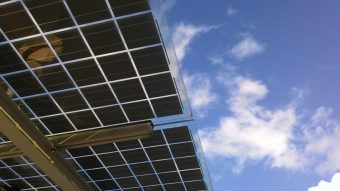
With declining costs for renewable energy technologies, interest has turned to how that might translate into the total system costs of integrating more renewable energy on the U.S. grid.
National Renewable Energy Laboratory (NREL) researchers Wesley Cole, Nathaniel Gates, and Trieu Mai examined how changing the contribution of renewable energy from the optimal solution impacts the cost of building and operating the electricity system, as well as trade-offs between emissions savings and system costs for higher and lower levels of renewable generation.
The results, outlined in an Electricity Journal article, point to a nonlinear relationship between system costs and renewable energy contribution: Small deviations from the least-cost solution have minimal cost impacts, while larger deviations from the least-cost solution can result in large cost changes. In addition, increased levels of renewables lead to lower absolute carbon dioxide (CO2) emissions.
More:
“We found that we can get to more than 80 percent renewable energy at the same cost as keeping the system at today’s level of renewables,” said Cole, NREL senior energy analyst and lead author of the paper. “Increased renewable energy contribution also reduces emissions, so going beyond today’s levels of renewable energy is a no-brainer.”
This work echoes the findings of another recent analysis published in Joule that showed the U.S. power system can achieve close to 100 percent renewable energy cost-effectively, but the last few percent come with a nonlinear cost increase. Here, Cole, Gates, and Mai did not study 100 percent renewable energy—but their results show that keeping renewables at today’s levels or limiting their growth can also produce system cost increases.
Source: Clean Technica



